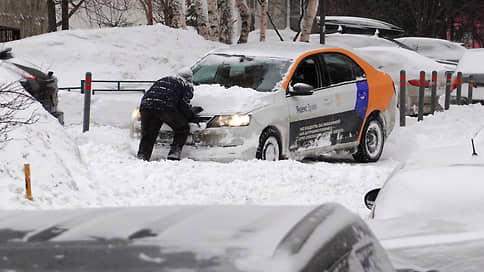OSAGO what prices – Newspaper Kommersant No. 32 (7477) dated 21.02.2023
[ad_1]

The allocation of the carsharing sector to a separate tariff group for OSAGO may lead to a significant increase in deductions of market participants for insurance. Insurers and the Central Bank believe that such measures are necessary due to the extremely high level of unprofitability in the segment. Experts note that as a result, the cost of carsharing can increase by 15-30%. However, it will not be possible to completely shift these payments to customers, since it will be necessary to maintain competitive conditions with taxis.
Car sharing may become more expensive after the allocation of such cars to an independent group when charging OSAGO, follows from a survey of “Kommersant” insurers from the top 10. This idea was put forward by the Central Bank due to the increased unprofitability and high social significance of the segment. According to the director of the underwriting and product management department of the Soglasie insurance company Pavel Nefedov, the separation of the group “will create an additional burden on companies that are engaged in car sharing services.” The rise in prices may be noticeable, adds Denis Makarov, member of the board of PJSC IC Rosgosstrakh. The main carsharing companies – Delimobil, Belka Car, Citydrive and Yandex Drive – declined to comment.
At the end of last week, Interfax reported that the Central Bank sent letters with a proposal to make changes to OSAGO to the Ministry of Finance and the Ministry of Transport. The Ministry of Finance advised on this issue to contact the Central Bank. The Central Bank and the Ministry of Transport did not respond to Kommersant’s request.
According to a study by GTK-Holding, in 2022, spending by Russians on short-term car rental increased by 30% and exceeded 26 billion rubles. For 70% of the Russians surveyed, such expenses amount to 3-5 thousand rubles. in year. The number of active users of car sharing services in Russia as a whole is already 1.6–1.8 million people.
OSAGO is unprofitable for carsharing, that is, insurance payments occupy a significant share in the received insurance premiums. Aleksey Yanin, managing director for ratings of insurance and investment companies at Expert RA, explains that such cars are much more intensively used, their drivers are more inclined to hurry, often less experienced and take less care of a car that is not their property. According to Mr. Nefedov, the frequency of accidents in carsharing is about one and a half times higher than in taxis, the accident rate of which reaches 20%.
According to Roman Lobodin, director of the mandatory types of insurance department at AlfaStrakhovanie, Roman Lobodin, the measure proposed by the Central Bank will reduce the burden on OSAGO companies’ unprofitability, which, in turn, “will reduce tariffs for other customers with a lower accident rate.”
Experts and market participants agree that the base rate for carsharing can be increased significantly. According to Roman Lobodin, tariffs for car-sharing companies can grow two to three times. According to Victor Pletnikov, director of business development in auto insurance at Zetta Insurance, for car sharing, the tariff should be 1.5–2 times higher than in a taxi, where the cost of the policy is 1.4–15 thousand rubles.
The PCA clarified that the base rate for OSAGO for passenger cars of legal entities is in the corridor of 0.85–5.7 thousand rubles. As independent expert Andrei Barkhota points out, in the event of past incidents, the cost of OSAGO for carsharing companies can be additionally increased by 50-200%.
At the same time, according to Viktor Pletnikov, the allocation of carsharing to a separate group will simplify the interaction between insurers and operators, and will also encourage companies to more carefully select customers who are allowed to use the service. According to Andrei Barhota, carsharing can rise in price by 15-25% for the middle class of cars and by 30% for budget options with an average trip duration of 30-40 minutes.
However, insurers are less categorical. According to Mr. Pletnikov, one should not expect an increase in the cost of a trip for customers, since “pricing in this segment is determined by competition with taxis and public transport more than by the cost structure.” Roman Lobodin also believes that this is unlikely to have a significant impact on carsharing customers, “since the increase in OSAGO insurance costs will be distributed over the calendar year and for all customers.”
[ad_2]
Source link





